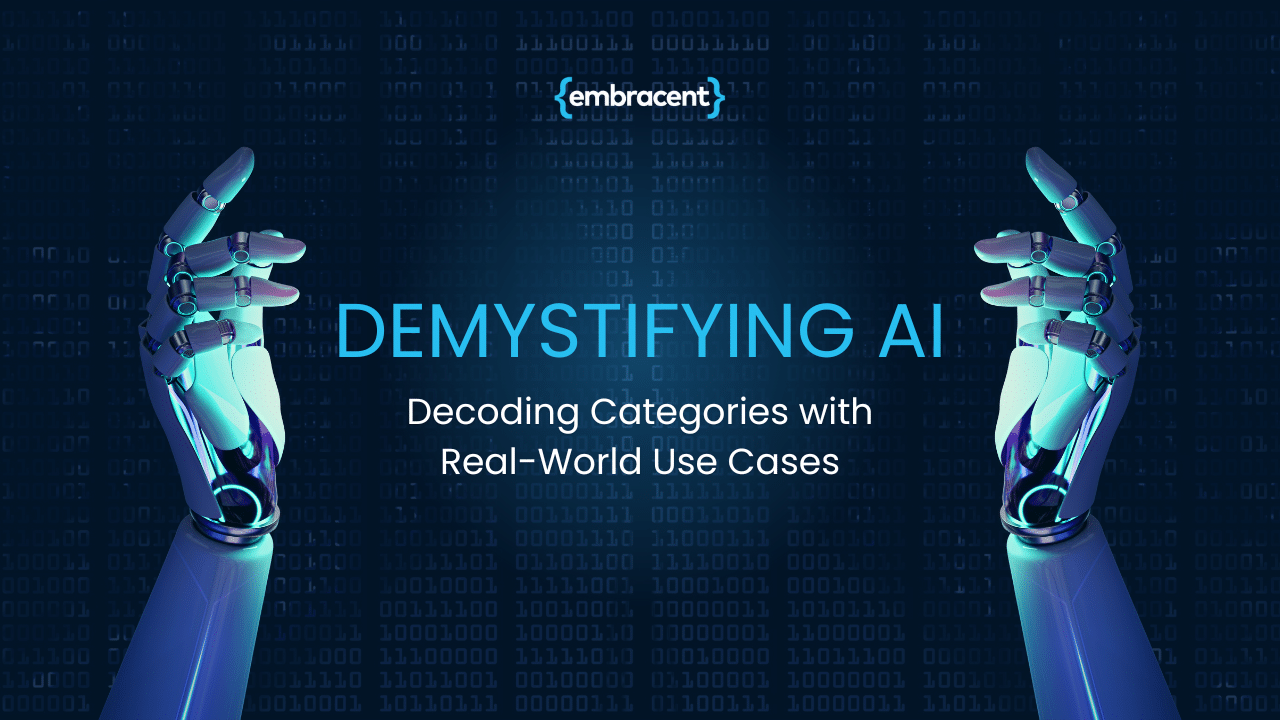
Artificial Intelligence (AI) has swiftly transformed from a sci-fi concept to a practical tool, driving innovation across industries. But what exactly is AI, and how can it be harnessed to enhance operations? Let’s unravel the complexity and explore the categories and applications of AI that are reshaping businesses today.
AI, or Artificial Intelligence, refers to the simulation of human intelligence processes by machines, particularly computer systems. It involves the development of algorithms, software, and hardware that enable machines to perform tasks that would typically require human intelligence, such as problem-solving, learning from experience, understanding natural language, recognising patterns, and making decisions.
Ok, but what does this mean?
AI is classified into two main categories:
Specialised and Generative AI.
Specialised AI, also known as Narrow AI or Weak AI, refers to artificial intelligence systems that are designed and developed to perform a specific task or a narrow set of tasks exceptionally well. Examples of this type of AI include virtual personal assistants (like Siri), language translation (google translate), fraud detection and robotic process automation. They are not designed to understand or learn beyond the tasks they are programmed for.
Generative AI: Generative AI refers to a class of artificial intelligence techniques and models that are designed to generate new and original content, such as text, images, audio, and more. These AI systems can create output that is not directly copied from existing data but is a result of learned patterns and creativity inherent in the model. Examples include text and image generation, AI chatbots (chat GPT) and video synthesis.
Generative AI has numerous creative and practical applications across various industries, including entertainment, art, design, content creation, and more. However, due to its creative nature, generative AI can sometimes produce unpredictable or even biased outputs, requiring careful consideration and validation when used in critical applications.
Ok, so we understand how it works.. but how are organisations using AI to optimise their business?
Manufacturing and Quality Control: Consider Sight Machine, an AI platform that transforms manufacturing by analysing production data. It identifies anomalies, predicts defects, and optimises processes, improving product quality and reducing downtime.
Customer Support and Chatbots: Zendesk’s Answer Bot employs AI to assist customer support. It comprehends customer enquiries, suggests solutions, and accelerates query resolution, enhancing user experience.
Data Analysis and Decision-Making: PowerBI, a data analytics platform, empowers businesses to make informed decisions. It automates data preparation and analysis, enabling organisations to uncover insights efficiently.
Supply Chain Management: Llamasoft uses AI to optimise supply chains. Its platform predicts demand fluctuations, allowing companies to adjust inventory levels dynamically, ensuring smoother operations.
Personalisation in Marketing: Dynamic Yield’s AI-driven personalisation platform transforms marketing. It analyses user behaviour to offer tailored recommendations, increasing engagement and conversions.
Energy Efficiency: BrainBox AI introduces AI to commercial buildings. Its platform optimises energy consumption by predicting climate control needs, resulting in substantial energy savings.
Autonomous Vehicles: Tesla’s self-driving technology displays AI in action. Cameras and sensors process data, enabling Tesla vehicles to navigate autonomously and adapt to changing road conditions.
Finance & Administrative tasks: UiPath is the market leader for RPA (Robotic Process Automation) and offers products to automate repetitive and mundane tasks, “taking the robot out of the human”. Their offering continues to evolve with emerging technologies, offering connectors to recent generative AI such as ChatGPT and offering its own machine learning products to read and process invoices and understand documentation.
Incorporating AI into operations involves choosing the right product for specific needs, understanding its functionality, and ensuring ethical considerations. While AI offers immense advantages, addressing biases, privacy concerns, and human oversight is crucial. The data we feed into models is imperative for the success within your business, poor data in.. bad decisions out.
In conclusion, AI has transcended the realm of theory, becoming an integral part of modern operations. By grasping its categories and real-world applications, businesses can harness AI’s capabilities to streamline processes, enhance customer experiences, and drive innovation. As AI continues to progress, its transformative impact will reshape industries, creating a landscape where technology and human ingenuity collaborate seamlessly.

